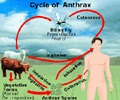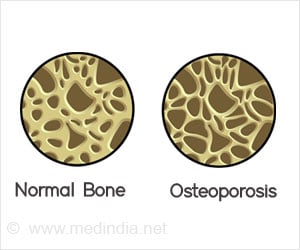Researchers have found a mechanism that anthrax bacteria use to elude the body’s defenses, which could lead to a drug or therapy to lessen the effect of anthrax bacterial species Bacillus anthracis.
Researchers have found a mechanism that anthrax bacteria use to elude the body’s defenses, which could lead to a drug or therapy to lessen the effect of anthrax bacterial species Bacillus anthracis if used in a bioterrorism attack.
For the last four years, Dr. Rowe Byers, professor of microbiology, and Dr. Jean Arceneaux, associate professor of microbiology, have worked on the project that led to this discovery with scientists from the University of California,Berkeley and the Fred Hutchinson Cancer Research Center in Seattle. Assisting Byers and Arceneaux at UMC were Dr. Bianca Garner, currently a postdoctoral fellow in the Department of Medicine and Melissa Wilson, a graduate student in the Department of Microbiology.A study of how bacteria steal iron from the body uncovered the mechanism that makes an end run around the body’s defense system. Byers said almost everything requires iron, even the anthrax organism.
“Organisms that cause infections have to find a way to get it from their hosts, in this case, humans. There is essentially no free iron available to a pathogen in a normal host. All of the host’s iron is functioning in enzymes or heme containing proteins, or is safely stored, with a small amount in transit bound to a protein called transferrin. Pathogenic bacteria like anthrax must tap into our normal iron flow to grow,” he said.
Bacteria have several means to capture iron from a host. Production of iron binding agents called siderophores is one of the mechanisms by which bacteria take iron away from the body. In response, the body makes a protein called siderocalin, which binds and inactivates some siderophores.
Siderocalin is a major and recently discovered pillar of the host’s innate defense system against infectious diseases, Byers said.
On the other side of this tug-of-war over iron is the anthrax organism, which produces a unique siderophore, called petrobactin. It was first discovered in anthrax by the UMC group. Petrobactin is not bound by host siderocalin so its iron gathering ability isn’t stopped by the body’s production of siderocalin, thus enabling petrobactin to steal iron from the body. It’s referred to as the “stealth” siderophore.
Advertisement
At this time, the only pathogenic bacteria known to produce the unusual siderophore petrobactin are anthrax and one of its close relatives.
Advertisement
The research also could lead to a way of detecting purposeful release of anthrax. If petrobactin is found, then there’s a presumption there was an anthrax attack with a bioweapon.
UMC has a Level 3 anthrax research laboratory and the exclusive ability of the UMC research group to produce petrobactin from Bacillus anthracis is one of the reasons why UC-Berkeley collaborated on the project. Everyone working in the lab here had to submit to an FBI profile and the laboratory had to be approved by the Centers for Disease Control. Great precautions are taken to ensure the safety of the lab and the MedicalCenter and to provide security for the agent of bioterrorism.
The mail attacks with anthrax spores at the U.S. Senate and in New York confirmed the importance of the research. Arceneaux said the researchers began studying the iron acquisition system of anthrax because few others were doing it.
“One reason it hadn’t been studied much was because anthrax is rare in humans. It wasn’t until it was realized that it could be used as a bioweapon causing mass infections that interest peaked,” she said.
Source-Bio-Bio Technology
SRM






